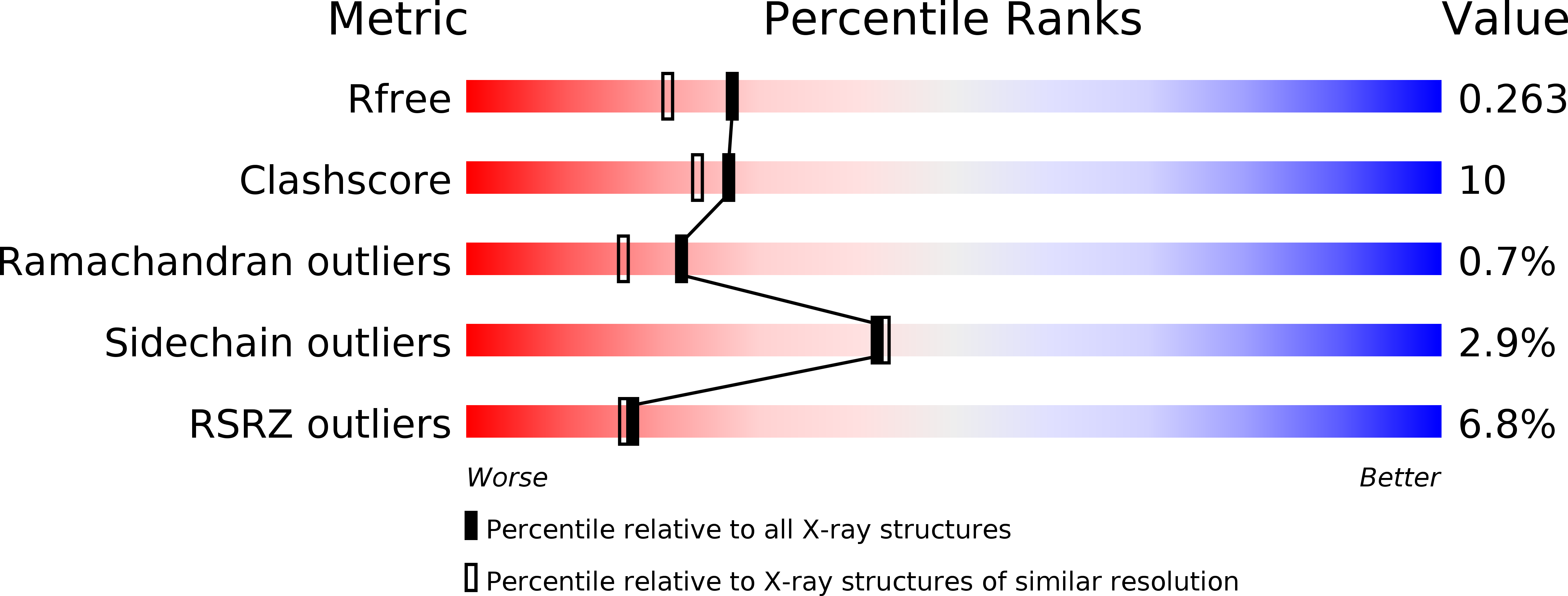
Deposition Date
2002-10-11
Release Date
2003-02-25
Last Version Date
2024-02-14
Entry Detail
PDB ID:
1N06
Keywords:
Title:
Crystal Structure of Schizosaccharomyces pombe Riboflavin Kinase Reveals a Novel ATP and Riboflavin Binding Fold
Biological Source:
Source Organism:
Schizosaccharomyces pombe (Taxon ID: 4896)
Host Organism:
Method Details:
Experimental Method:
Resolution:
2.00 Å
R-Value Free:
0.27
R-Value Work:
0.23
R-Value Observed:
0.24
Space Group:
P 1


